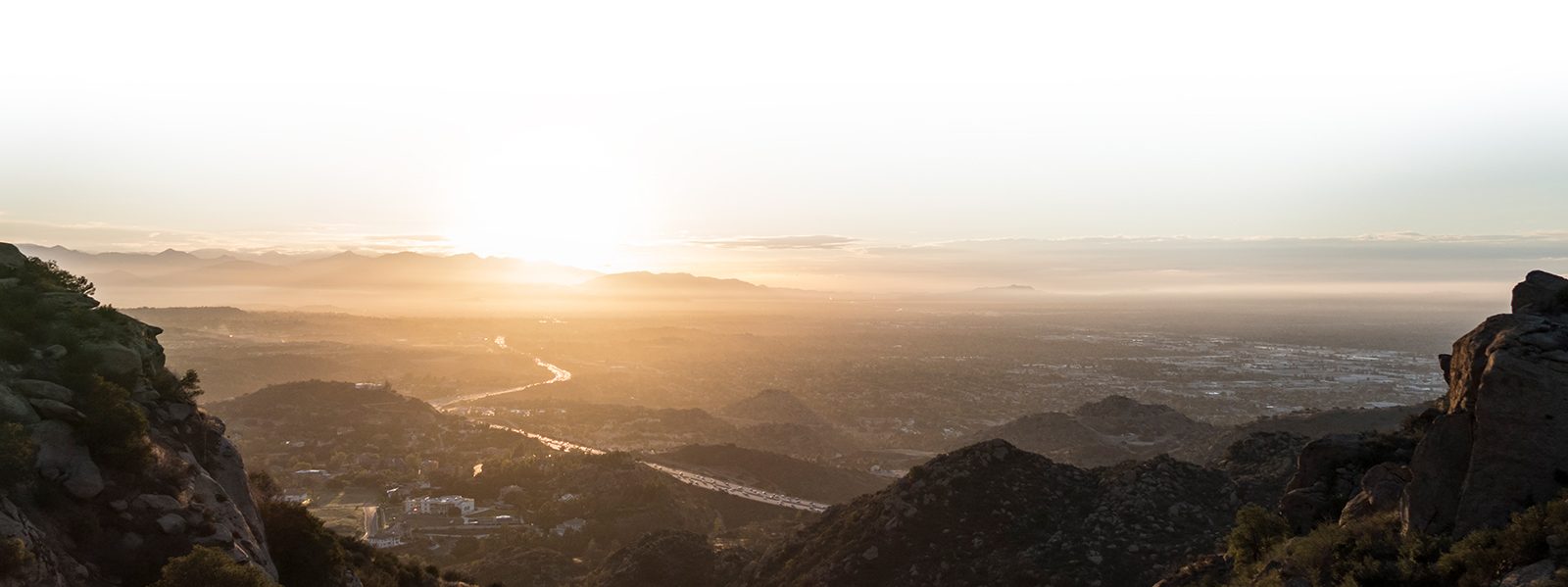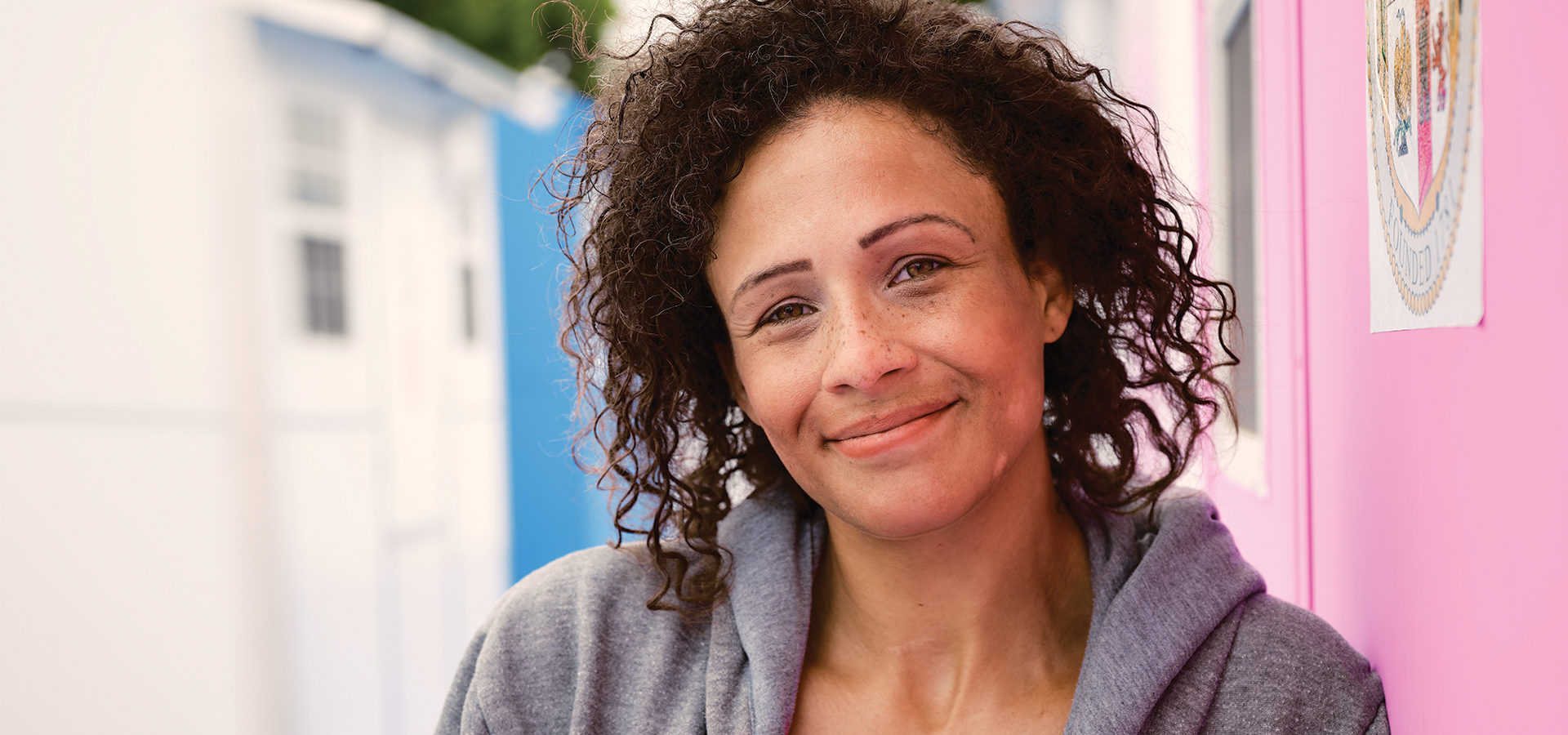Hope of the Valley Opens Another Tiny Village Shelter in the Valley
A creative solution to housing the homeless.
The accommodations are fairly simple. Constructed of aluminum and composite materials, they are prefabricated cabins featuring built-in beds and shelving, measuring a miniscule 64 square feet. But for some of our city’s estimated 40,000 homeless, the modest structures make shelter living an option.
“Congregant shelters lack some of the privacy that a tiny home provides. Also, residents appreciate the fact that they can control their own temperature and have a locking front door,” says Ken Craft, chief executive of Hope of the Valley, which currently services three “tiny village” homeless shelters in the Valley.
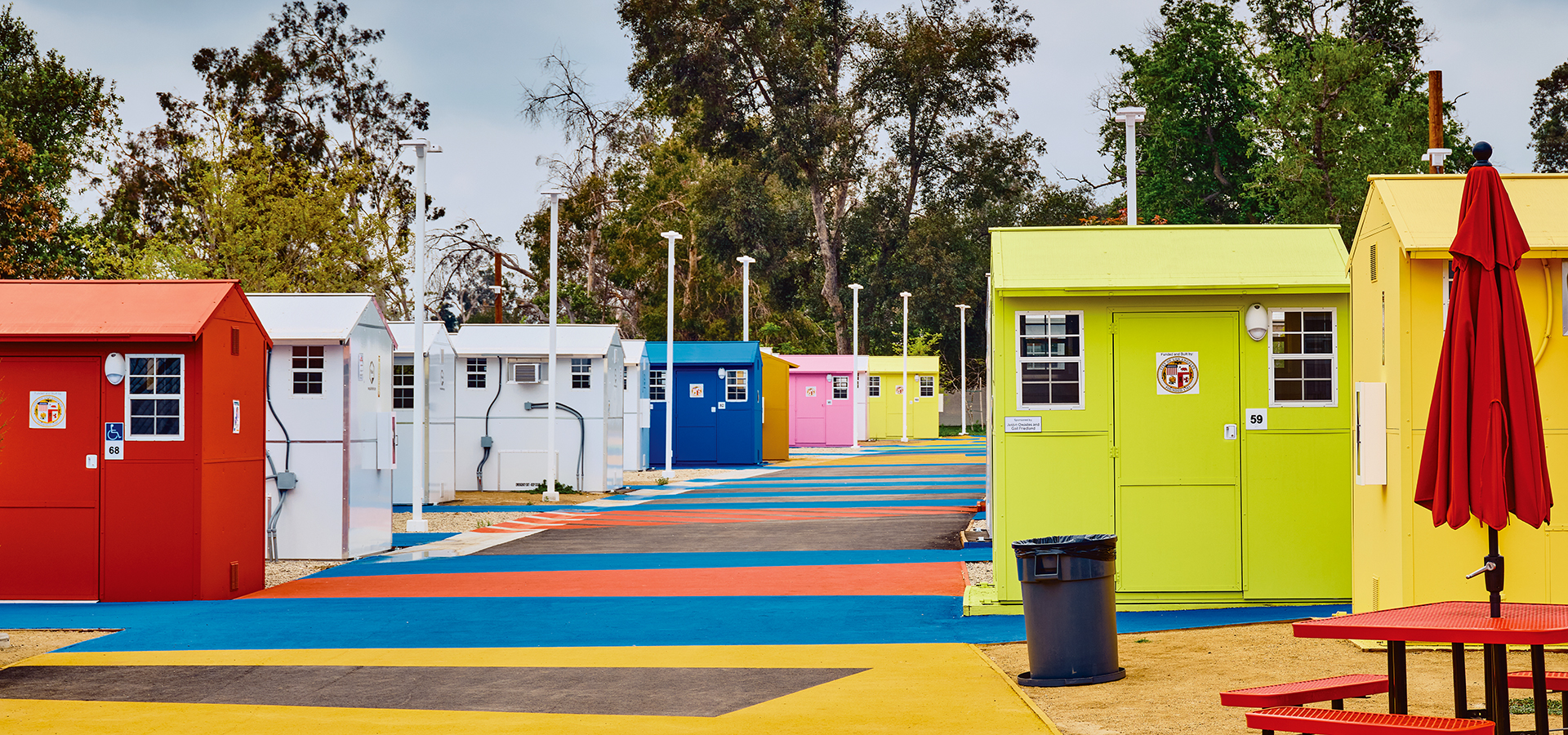
Take, for example, a resident at the tiny village on Chandler Boulevard in North Hollywood. That resident had been homeless since 1994, when the Northridge earthquake partially collapsed his apartment.
“Those events were very traumatic for him, so much so that he’d never slept inside since then. When an outreach worker talked to him about coming here, he thought it might be something he could do,” explains Ken. “When he first moved in, he’d sleep with the door open every night because that made him feel less vulnerable. And now we see that he’s starting to be able to close the door at night.”
The amenities and on-site services are significant: heat and air conditioning, walkways, outdoor tables, an area for dogs to play, and security as well as case managers and counselors available to help them work toward getting jobs and moving into permanent housing.
The city of LA has bought the prefab homes and constructed sites for a total of five tiny village locations, three of which are currently open: the Chandler facility, another one in North Hollywood, and one in Reseda. Two more tiny villages, in Tarzana and Los Angeles, are slated to open in the second half of 2021.
In addition to the tiny village sites, Hope of the Valley services eight other traditional and hybrid shelters in the LA area, including ones in Arleta, Chatsworth and Burbank, which house individuals and families.
The idea to create mini villages morphed out of Ken’s work with the University of Southern California’s architectural and engineering division. “We built a prototype of a tiny home and we had it at our HELP Center location in Van Nuys. We thought it looked promising. It was still kind of expensive and bulky and not quick to install. And about that time, the Seattle-based company Pallet Shelter unveiled their tiny home, which can be installed in 90 minutes,” says Ken.
The units have two beds, storage under the beds, and two electrical outlets on each side. And that one coveted feature: a front door that locks. “It was like, why reinvent the wheel? About that time, the city of Los Angeles was starting to look at the possibility of these units. And then I was approached by the city councilmember Paul Krekorian’s chief of staff, who says, ‘Ken, what do you think of this?’ And I said, honestly, I think it’s brilliant.” That conversation spearheaded the creation of the first tiny village on Chandler Boulevard in North Hollywood.
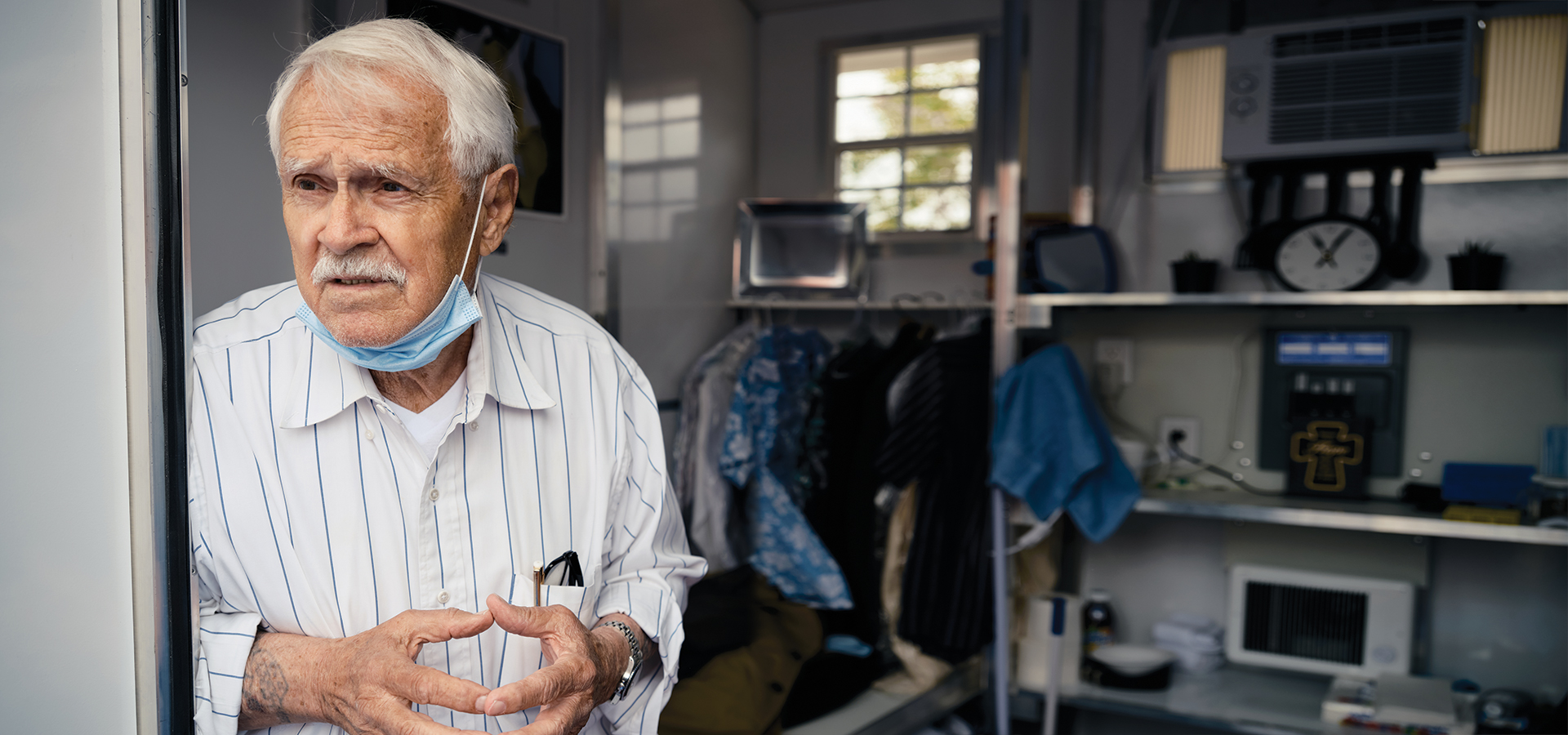
Above: Before becoming a resident at the Alexandria Park Tiny Home Village, Mr. Jackson was living in his car. “You know you’re going to be fed. You’re looked out for and taken care of. You have shelter. It’s a lot more comforting and comfortable,” he says.
The shelter sites are built on unused, city-owned land. The LA Bureau of Engineering designs and builds the infrastructure if needed (in most of the tiny villages, sewer and electric were already in place). “Then we (Hope of the Valley) have to come in and put in the Wi-Fi, put in the video surveillance, get all the units ready with sheets, pillows, blankets and all that, ready to go. And we have to hire all the staff to operate it. Then the city allows us to do what we do best: operate the site.”
The nonprofit relies on donors to help defray the cost of running the shelters. Actor Jon Cryer and wife Lisa Joyner, Valley residents for 15 years, donated $50,000 to sponsor the Chandler Boulevard site. Site sponsors help fund excess operational costs for the site. The impetus for the couple’s donation was their daughter.
“It crushes me to hear people complain about the homeless epidemic and act as if these people are a nuisance. These are friends, families, neighbors, mothers, daughters, sons. Each day as I drove through the encampments with our 11-year-old on her way to school, I would witness the compassion and sadness she felt. She really was my incentive to do more,” says Lisa.
Lisa reached out to Ken to get a tour of the first tiny home facility. “Both of us just marveled at how quickly and efficiently these communities were being put together and all the thought that went into it. All the social services they were addressing in addition to the basics of having a safe place to sleep,” Jon adds.
The site sponsor for the Reseda tiny village is LA Lakers player JaVale McGee. Wells Fargo is sponsoring Alexandria Park Tiny Homes in North Hollywood. Hope of the Valley has yet to secure a sponsor for the Tarzana location.
Also among the donors: the late Alex Trebek and his wife, Jean (Fryman Canyon residents). In the months before the Jeopardy! host’s death, the couple made a $100,000 donation from their Trebek Family Foundation.
“I remember Alex and I talking about the increase in homelessness in the San Fernando Valley and we felt called to do something—but what? We were interested in what both local government agencies and individuals were doing in addressing this situation. Then Alex read an article about Hope of the Valley’s rescue mission in North Hollywood (Raymer Bridge Shelter). Needless to say, he was very impressed with Ken and Laurie Craft’s (Ken’s wife) passion,” says Jean Trebek.
“The tiny homes have really captured the imagination of a lot of people about what could happen… it’s scalable, affordable and doable. It’s made people think that maybe there is an end game here and we can actually address this humanitarian crisis.”
Ken remembers when the call came in. “I was sitting here at my desk one day and Alex called out of the blue and said he’d like to come see the first tiny village. So he came and saw it and then I didn’t hear from him for three weeks. Then he called and said, ‘Ken, I need to know how much money you make.’ I said, OK, I make right around a hundred thousand dollars. I offered to send him our audited financials. He got them and then he called me back and said, ‘Ken I’d like you to come to my house tomorrow.’ So I went to his house and went inside his library. And on the desk there was our audited financials, all highlighted. He explained that he’d supported charities before where the CEO, the executive director, was making, you know, $400,000+. And he said that’s just not what he wanted to support. He said, ‘I love the way you’re running this. You have earned income; you have social enterprise.’ And he handed me a check for $100,000.”
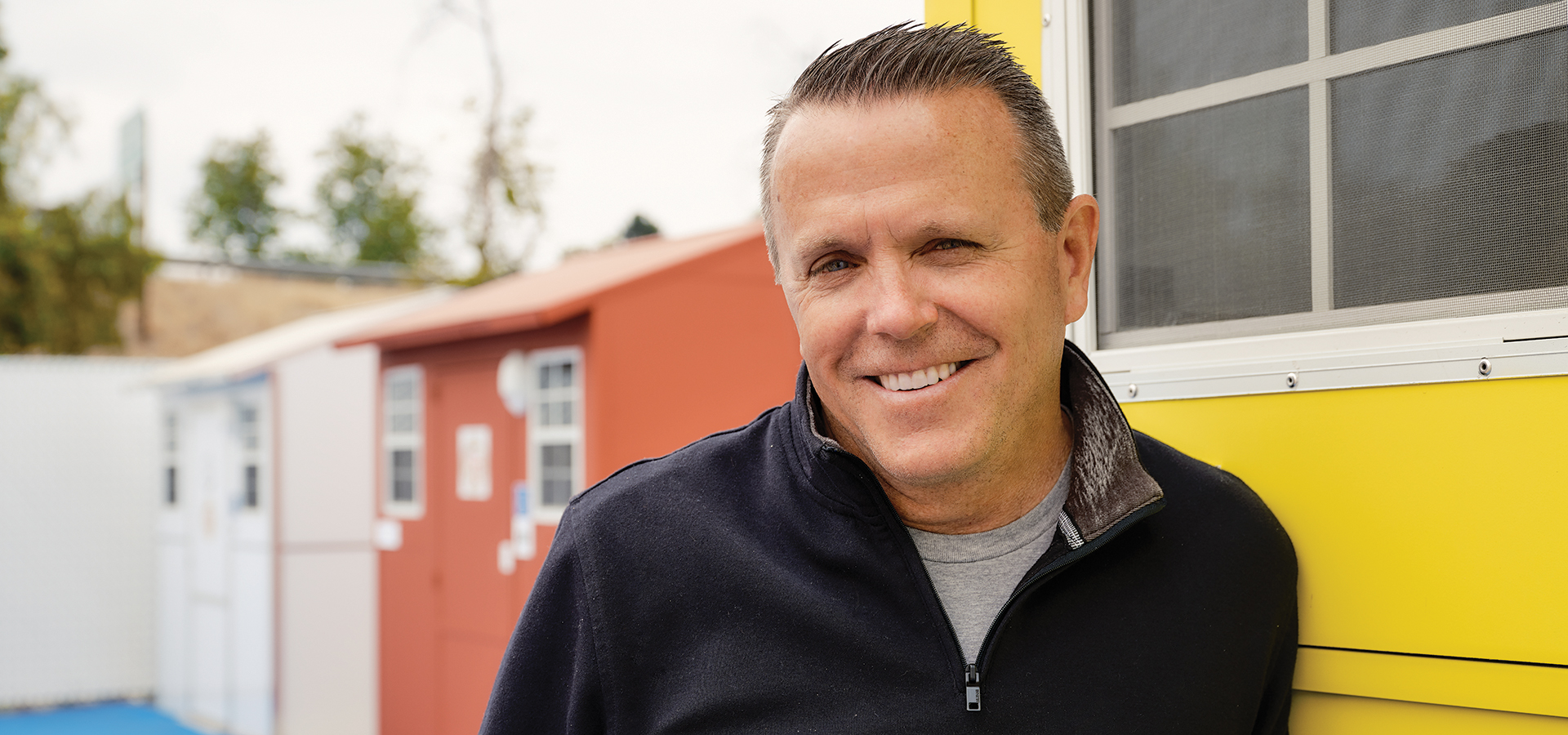
Above: Ken Craft
That money went toward the Raymer Bridge Shelter in North Hollywood, where a community room was named after the game show host. Then last summer Ken got another call from Alex asking if he and Jean could come see more sites. They went to Van Nuys Bridge Shelter, which was still under construction.
“All of a sudden Jean reached in her pocket and handed me a check for $500,000 and I was just blown away,” recalls Ken.
At the time, the game show host knew he didn’t have much time. “Alex was the kind of person that did not feel limited because of his diagnosis. He was a man of great fortitude and when he set his mind to something, that became his focus. He was already motivated to assist the community’s unhoused and Hope of the Valley gave him an actual place to do that,” says Jean.
Ken asked the couple if the money could be put toward a down payment on the old Skateland property in Northridge. The city was trying to buy the site for a shelter. The Trebeks agreed, and that site, named the Trebek Bridge Shelter, will offer 107 beds. Jean says she plans to visit when the shelter is completed later this year.
There has been some criticism of the tiny shelter concept—focusing mainly on the expense. It’s not just the $8,500 cost of each unit, but the expense of building out the site. The Chandler site, which has received the brunt of the criticism, was built on an unused dirt lot owned by the city between the Orange Line busway and Chandler Boulevard. The site had to be cleared, graded and paved. Walkways were installed as well as an access road for emergency vehicles, and concrete pads were built for each unit. There’s also an administrative office for service providers and a booth for a security guard. With 39 tiny homes, it cost more than $5 million. Other shelters in LA—with a similar number of beds—cost considerably less.
“The Chandler site was raw land with no utilities. The City was eventually going to have to upgrade their property. They chose to do it now and determined the highest and best use for the property was to open a tiny home community. When the community is no longer needed, they will be able to utilize or sell their property for a significant amount because it now has the utilities on it,” says Ken.
City officials insist that subsequent sites will be cheaper to build on because they won’t need as much work as the Chandler one did.
Ken remains staunch in his belief that the Valley’s tiny homes are a game changer. “The tiny homes have really captured the imagination of a lot of people about what could happen. What really excites people is that it’s scalable, affordable, and doable. It’s made people think that maybe there is an end game here and we can actually address this humanitarian crisis.”
Architect May Sung Comes to The Rescue on a Studio City Reno Gone Wild
In the right hands…finally!
Join the Valley Community
